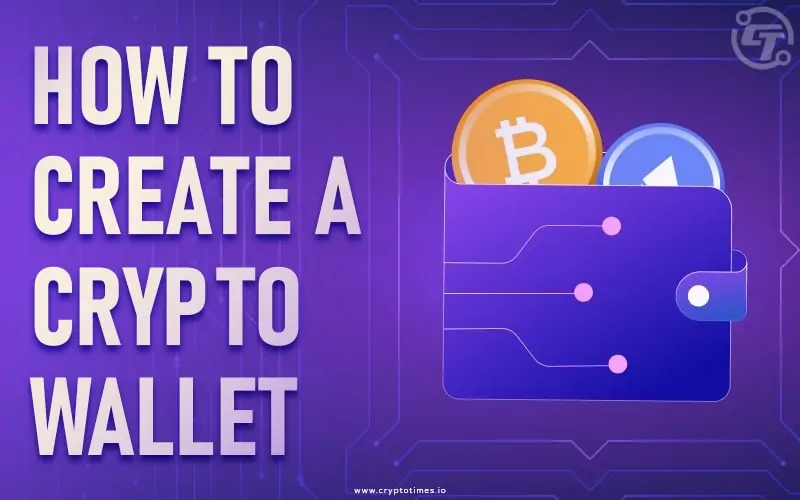While the crypto space is expanding gradually, the demand for robust crypto infrastructure and platforms is also soaring. Crypto wallets are such essential things to store various digital assets like cryptocurrencies, non-fungible tokens, etc. securely. However, it can be quite daunting for someone to select and set up their first crypto wallet without sufficient knowledge.
A crypto wallet is an essential tool to explore a new realm of crypto space. One can take benefits of decentralized finance (DeFi) through a crypto wallet, including crypto trading, lending or borrowing digital assets, etc. Also, if you want to get know more about Bitcoin trading, you can visit https://bitcoin-billionaire.com.
In this article, we will explain how to choose the right crypto wallet for your needs and walk you through the step-by-step process of setting up your first crypto wallet.
What is Crypto Wallet?
A crypto wallet is a digital tool or software application that allows you to securely store, manage, and interact with your cryptocurrency. It is similar to a physical wallet you use to store your cash and cards, but instead of holding physical currency, a crypto wallet holds digital currencies like Bitcoin, Ethereum, or others.
A crypto wallet consists of two essential components: a public key and a private key. The public key is a unique address that others can use to send you cryptocurrencies, similar to a bank account number. The private key is a secret code known only to you, which allows you to access and manage your cryptocurrencies.
Types of Crypto Wallets
1. Web Wallets
A web wallet is a wallet that is stored in the cloud, and you can access it anywhere globally, provided you have an internet connection. Some of the most popular web wallets include Binance and Coinbase.
2. Mobile Wallets
A mobile wallet is a wallet that you can download to your smartphone via the App Store or Google Play. These wallets are useful since they can be accessed from anywhere. Trust Wallet and Mycelium are two examples of mobile wallets.
3. Desktop Wallets
A desktop wallet is a software program that you download to your computer. This type of wallet offers better security than web wallets as your data is stored on your hard drive, but you risk losing your wallet when your hard drive crashes. Desktop wallets are of many names of which Exodus is one of the most famous ones.
4. The hardware wallets
To keep private keys safe, hardware wallets are quite useful. When compared to other hot wallets, this sort of wallet provides the best level of protection. Some of the examples of hardware wallets are Trezor and ledger.
5. Paper Wallets
A paper wallet is an offline wallet meant to store your private keys on paper. This type of wallet offers a secure way of storing your cryptocurrencies but can be easily damaged.
Also Read: Multisig Wallet: The Future of Secure Crypto Transactions
Step-by-Step Guide To Creating Your First Crypto Wallet
Here are a few simple steps to set up your first crypto wallet in just 5 minutes.
Step 1: Explore and Choose Crypto Wallet
As mentioned earlier, numerous types of crypto wallets are available in the market. Instead of picking randomly, it is advisable to explore different crypto wallet service providers. You can also get help from the reviews from the other customers.
Also, if you get confused between two or three different final choices, you can compare these wallets based on features and security measures to find the best one for you. You should choose a wallet according to your convenience, fund size, security, and how often you will use it.
Step 2: Follow The Installation Process (Not Required for Browser Wallets)
Once you have chosen the crypto wallet that best suits your needs, the next step is to download and install it on your device. The installation process may vary depending on the type of wallet you have selected.
If you have chosen a hardware wallet, such as a Ledger or Trezor, you will need to connect the device to your computer or mobile device and follow the instructions provided by the manufacturer.
For software wallets, such as Exodus, Jaxx, or Electrum, you can typically download the wallet application from the official website of the wallet provider or through reputable app stores like Google Play or the Apple App Store. Follow the instructions provided during the installation process, and make sure to download the wallet from trusted sources to avoid any security risks.
Also Read: How to create your own MetaMask wallet?
Step 3: Set Up Your Wallet
After installing the wallet, you will need to set it up. The setup process usually involves creating a new wallet or importing an existing one. Here are the general steps you may need to follow:
Click on “Create a new wallet”: If you are setting up a new wallet, the software will usually generate a new wallet address and a corresponding private key. Make sure to securely store the private key as it is essential for accessing and managing your funds. Some wallets may also provide you with a recovery phrase or seed words that you should write down and keep in a safe place. This recovery phrase can be used to restore your wallet if you ever lose access to it.
Step 4: Secure Your Wallet
Once your wallet is set up, it is crucial to take steps to secure it properly. Here are some essential security measures one should consider:
- Enable two-factor authentication (2FA): Many wallets offer 2FA as an additional layer of security. Enable this feature if available, as it requires a second verification step, usually through a mobile app, to access your wallet.
- Create a strong password: Choose a strong and unique password for your wallet that is difficult to guess. Do not use common words or personal information like phone numbers in your password.
- Backup your wallet: Regularly back up your wallet data, including the private keys or recovery phrase, to an external device or offline storage. This backup will help you restore your wallet if your device is lost, stolen, or damaged.
- Keep your software up to date: Stay vigilant about updating your wallet software to the latest version. Wallet updates often include important security patches and bug fixes.
Step 5: Fund Your Wallet
To start using your crypto wallet, you need to add funds to it. The method for funding your wallet may vary depending on the wallet and the type of cryptocurrency you want to use. You can directly purchase crypto from exchanges or you join the mining pools.
Step 6: Manage and Use Your Wallet
Once your wallet is funded, you can start managing and using your cryptocurrencies. For testing purposes, you can transact your crypto funds with crypto exchanges.
Cautions:
Remember to stay informed about the latest security practices and be cautious of phishing attempts or fraudulent activities targeting cryptocurrency users. Regularly review your wallet’s security settings and keep your software up to date to ensure the safety of your funds.
Also Read: How Secure is a Crypto Wallet for Your Digital Currencies?
Conclusion:
While cyber-attacks on the crypto platforms are increasing with every passing day, storing crypto funds in a safe place must be a priority for crypto holders. By doing proper research and implementing security measures, one can ensure the security of their funds.
Also, the right choice of crypto wallets provides flexibility for making transactions. By following the above-mentioned step-by-step guidelines, you should be well on your way to creating and using your first crypto wallet effectively.







